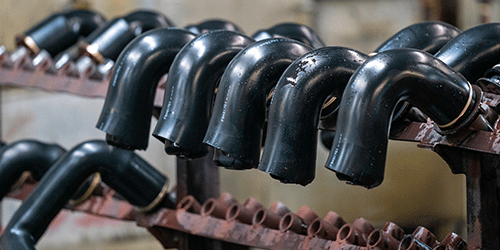So, is rubber eco friendly? Recycled rubber, reclaimed rubber, and products made from the Para tree sap rubber are all considered to be rather sustainable materials. Whenever rubber is discarded or left on its own, or when it would have been created in an old factory with old procedures rather than the natural way it is meant to be consumed. Only then can rubber become harmful to the environment.
Unexpected environmentally friendly rubber products like recycled rubber sheets are now available quite inexpensively than petroleum-based elastomers. They are used in thousands of applications as effective substitutes where people have recorded amazing reviews which would convince you of their usability. Thankfully, for the most part, rubber is created and produced with the intent of preserving our environment, not harming it!
Some Green Rubber Products are made of Recycled Elastomers
Eco Friendly RubberEven if the original materials contained petroleum products the rubber can be “green”. Other green rubber is biodegradable, and typically made of plant-based materials. Still other rubber products deserve the “green” label because they have longer life cycles, even if the raw materials don’t come from sustainable sources.
Recycled rubber is considered to be, for the most part, obtained from ground up used and discarded tires which are either left to be discarded or wasted. Now these tire crumbs are then produced, which tend to be in a variety of mesh sizes mostly to accommodate uses in various applications. Sustaining the production of this kind and type of rubber eliminates the environmental risk and the build-up of waste in landfills. It is manufactured inexpensively which means it is available at a rather low cost in comparison to its competitors and with low energy requirements, and, perhaps most importantly, it is the most economical of all rubber options.
Industries have recently sprouted a vast number of new applications such as: rubber floorings, playground safety products, rubber mulch, shoes, highway safety barriers, speed bumps, and even moulded recycled rubber sheets that compete with traditional vulcanized virgin sheet goods.
This has set the precedent to lead the production of less expensive and rather sustainable, yet durable products that benefit all aspects of the business including cost, community, consumers and the environment. Furthermore, it need not even go through any sort of mechanical or chemical processes to be utilized for they can be used as makeshift sanctuary locks for plants at reefs.
Reclaimed rubber differs only slightly, although while it too uses primarily discarded tires in its production, it would be requiring a process involving the step where it would have to undergo de-vulcanization and re-vulcanization to create products similar to petroleum based goods. Vulcanization involves the addition of the element of sulfur to the rubber itself which would alter it and create strong and sustainable bonds, which tend to create “cross-linked” bonds that are responsible for strengthening the base material.
De-vulcanization, involves the destruction of these bonds, basically to extract the materials from the compound and therefore bring the rubber back to a more pliable state. The base material is vulcanized once more and then processed into sheets of rubber which are ideal for a wide variety of applications which rely on the use of any kinds of rubber.
So to consult an expert on your requirements and questions, click here.
